Vector Laboratories is closed for the President’s Day on Monday, February 19th. We will be back in the office on Tuesday, February 20th.
We will respond to emails upon our return. Have a wonderful day.
Menu
Vector Laboratories is closed for the President’s Day on Monday, February 19th. We will be back in the office on Tuesday, February 20th.
We will respond to emails upon our return. Have a wonderful day.
ImmPACT Vector Red AP Substrate Kit produces a magenta reaction product that is crisper and is 2-4 times more sensitive than the original Vector® Red substrate kit (SK-5100). It can be used singly or in combination with other alkaline phosphatase or peroxidase substrates for multiple label applications.
| Unit Size | 1 kit |
|---|---|
| Applications | Immunohistochemistry / Immunocytochemistry, Immunofluorescence, In situ hybridization, Blotting Applications, Elispot |
| Detection Enzyme(s) | Alkaline Phosphatase |
| Substrate Reaction Product | Precipitating Reaction Product |
| Chromogen Color | Magenta |
| Color of Fluorescence | Red |
| Microscopy | Brightfield, Fluorescence, Spectral Imaging |
| Additional Substrate Properties | Contrast with Tissue Pigments, Fluorescent, Heat Resistant, Multiple Labeling |
| Mounting | Aqueous (Hardening), Aqueous (Non-Hardening), Non-Aqueous (Permanent) |
Both Vector Red and ImmPACT Vector Red alkaline phosphatase (AP) substrates produce red, heat stable reaction products that are also highly fluorescent and non-fading. Preparations stained with either Vector Red or ImmPACT Vector Red AP chromogen can be dehydrated, cleared, and permanently mounted. Because of their stability under ISH conditions, both chromogens can be used in IHC/ISH double labeling applications. Both formulations can be used for either manual or automated staining methods.
The bright fluorescence of the Vector Red or ImmPACT Vector Red reaction products are visible using DyLight™ 594, Texas Red® or TRITC filter systems. The fluorescence is especially bright in dehydrated, permanently mounted sections. The fluorescence is stable and does not photobleach like most fluorescent dyes.
Either substrate formulation can also be used on blots. Compared to other AP substrates, the Vector Red and ImmPACT Vector Red reaction products have a wider dynamic range, offering better quantitation of targets on blots.
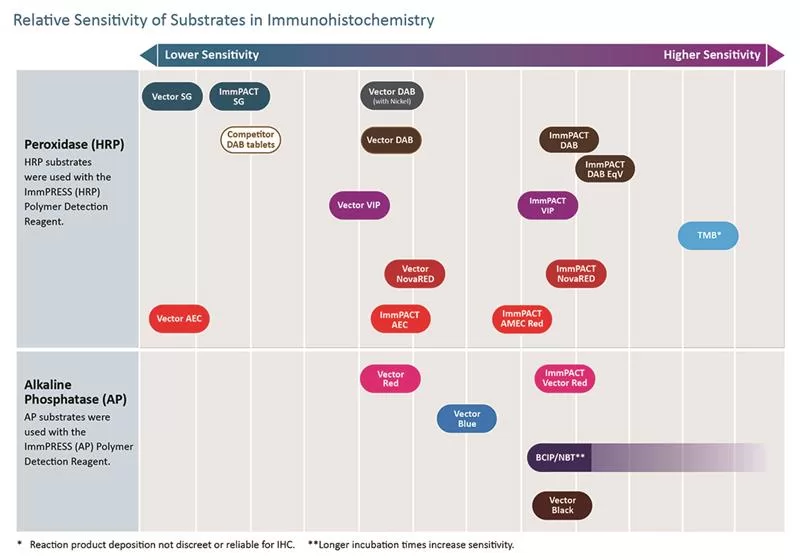
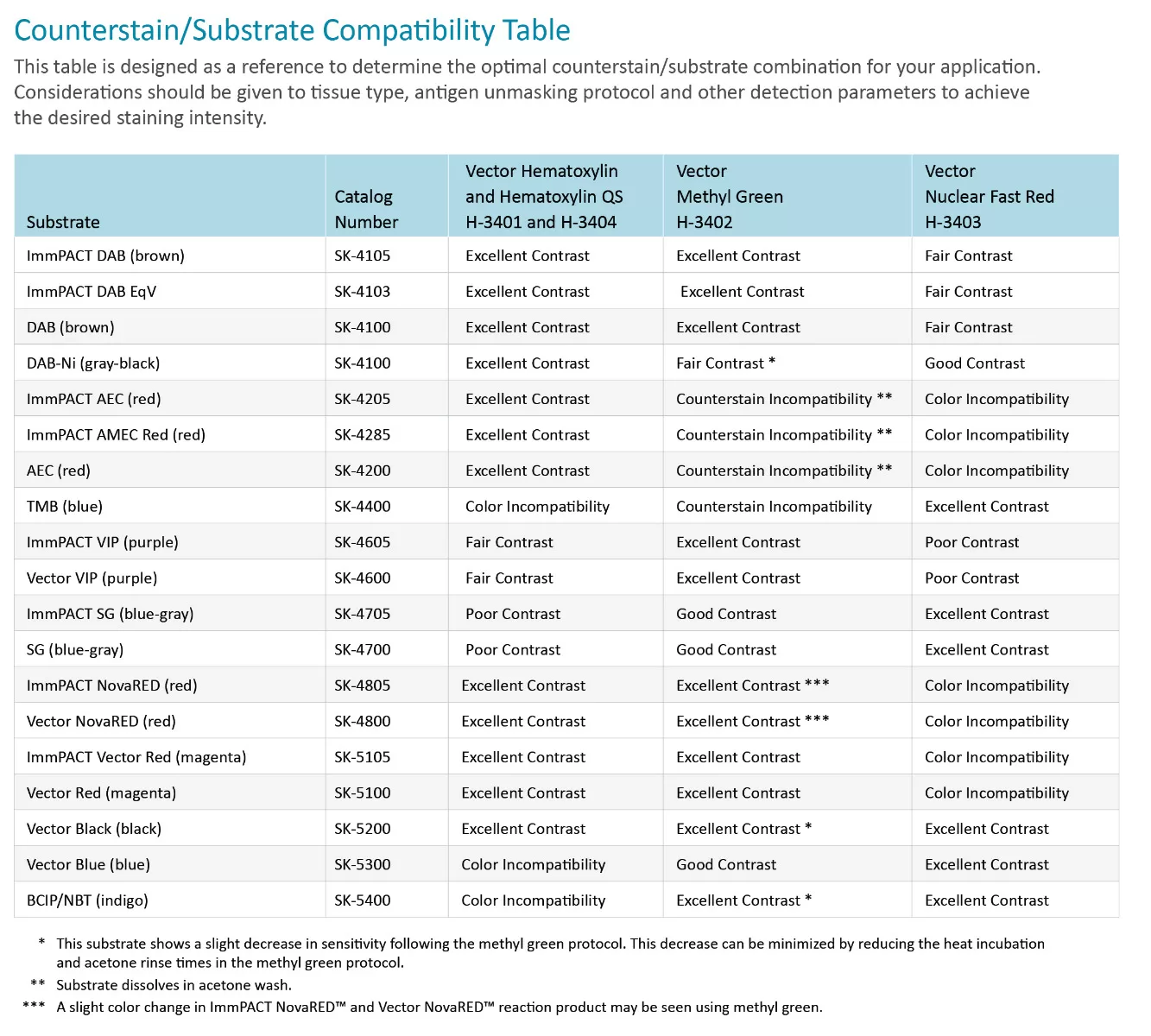
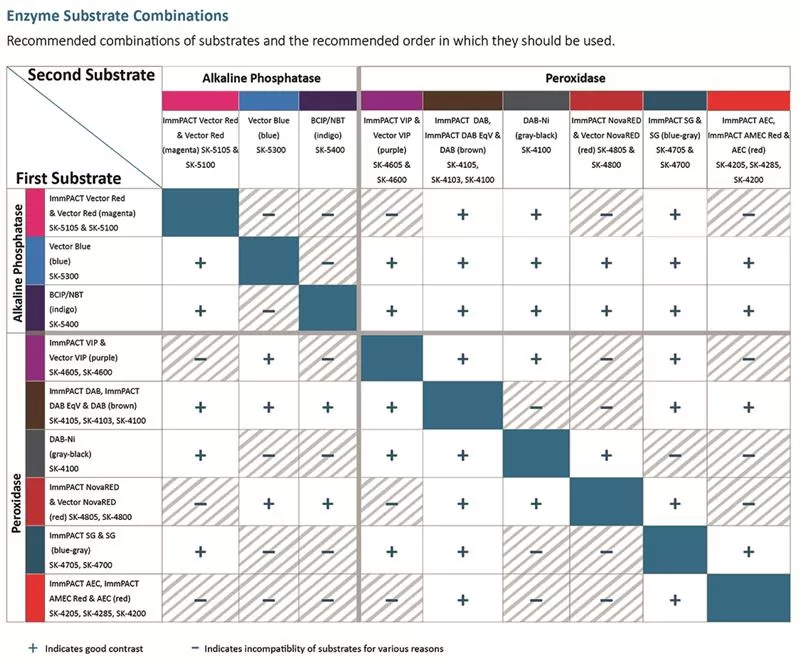
Applicable patents and legal notices are available at legal notices.
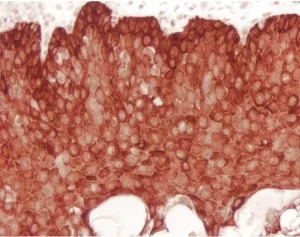
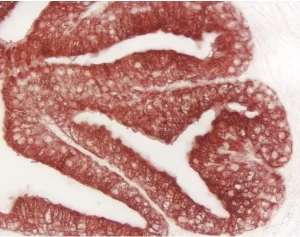
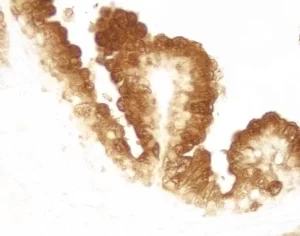
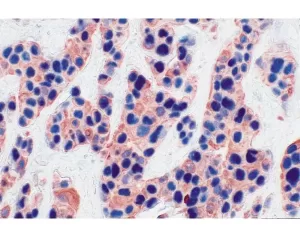
Stay in the Loop. Join Our Online Community
Together we breakthroughTM
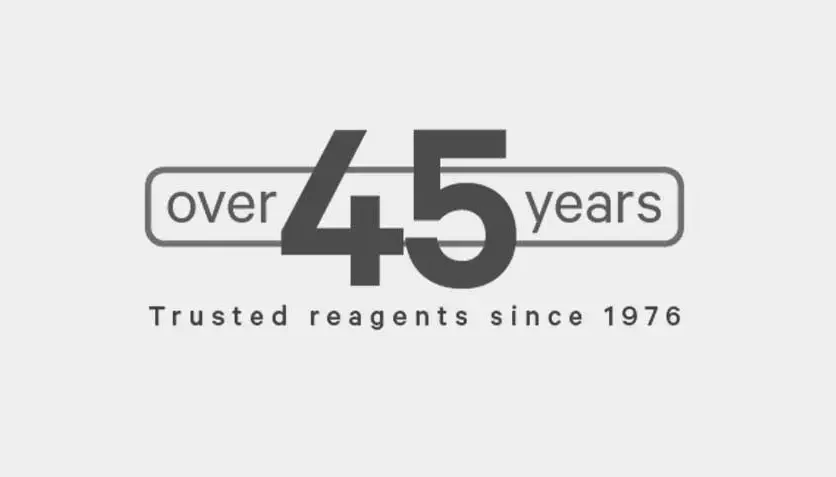
©Vector Laboratories, Inc. 2024 All Rights Reserved.
How do I Request a Quote?
To request a quote for products: